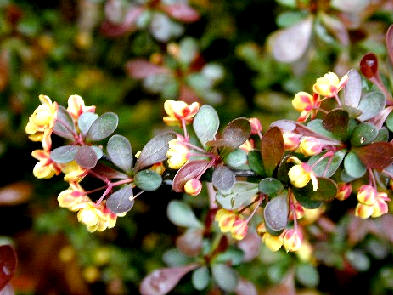| Berberis thunbergii | |
|
Japanese Barberry
|
|
| Origin Of Species | |
| Asia | |
| Physical Description | |
| Japanese barberry is a small ornamental shrub that can reach up to five feet in height and width. Simple alternating leaves are usually about an inch long and may be green or maroon in color. Short shoot clusters are present and leaves are modified as spines on the long shoot. Pale yellow flowers form in clusters between April and May. Small red elliptical berries ripen in fall but often persist into the following spring. | |
| Habitat And Distribution | |
| Japanese barberry is often found along roadsides and in pastures and thickets, predominately in the northeastern, eastern, midwestern, and northern United States, from Maine south to Georgia, and west to Wyoming, North Dakota, and Nebraska. | |
| Location On Campus | |
| Japanese barberry is planted as an ornamental, most notably on Chapel Circle Drive at the start of the walkway that leads between the Henry M. Cannon Memorial Chapel and Gottwald Science Center. | |
| Negative Impacts | |
| Japanese barberry is often planted as an ornamental, but can also be highly invasive because it can survive in a myriad of environments and effectively compete with native vegetation for essential resources. | |
| VDCR Invasiveness Ranking | |
| Moderately Invasive Species Additional Images: Flowers with branch and leaves Branches with leaves |
|
